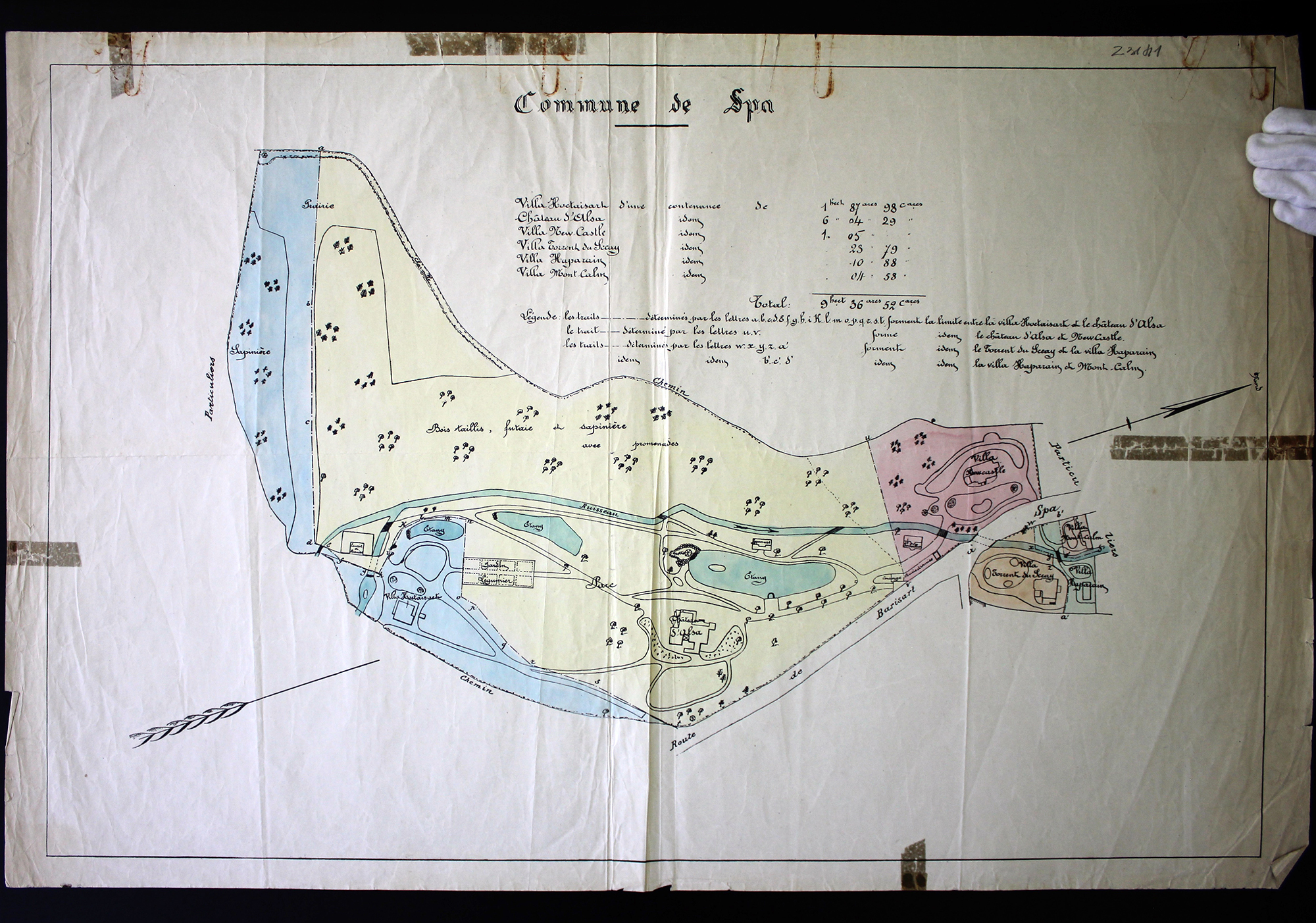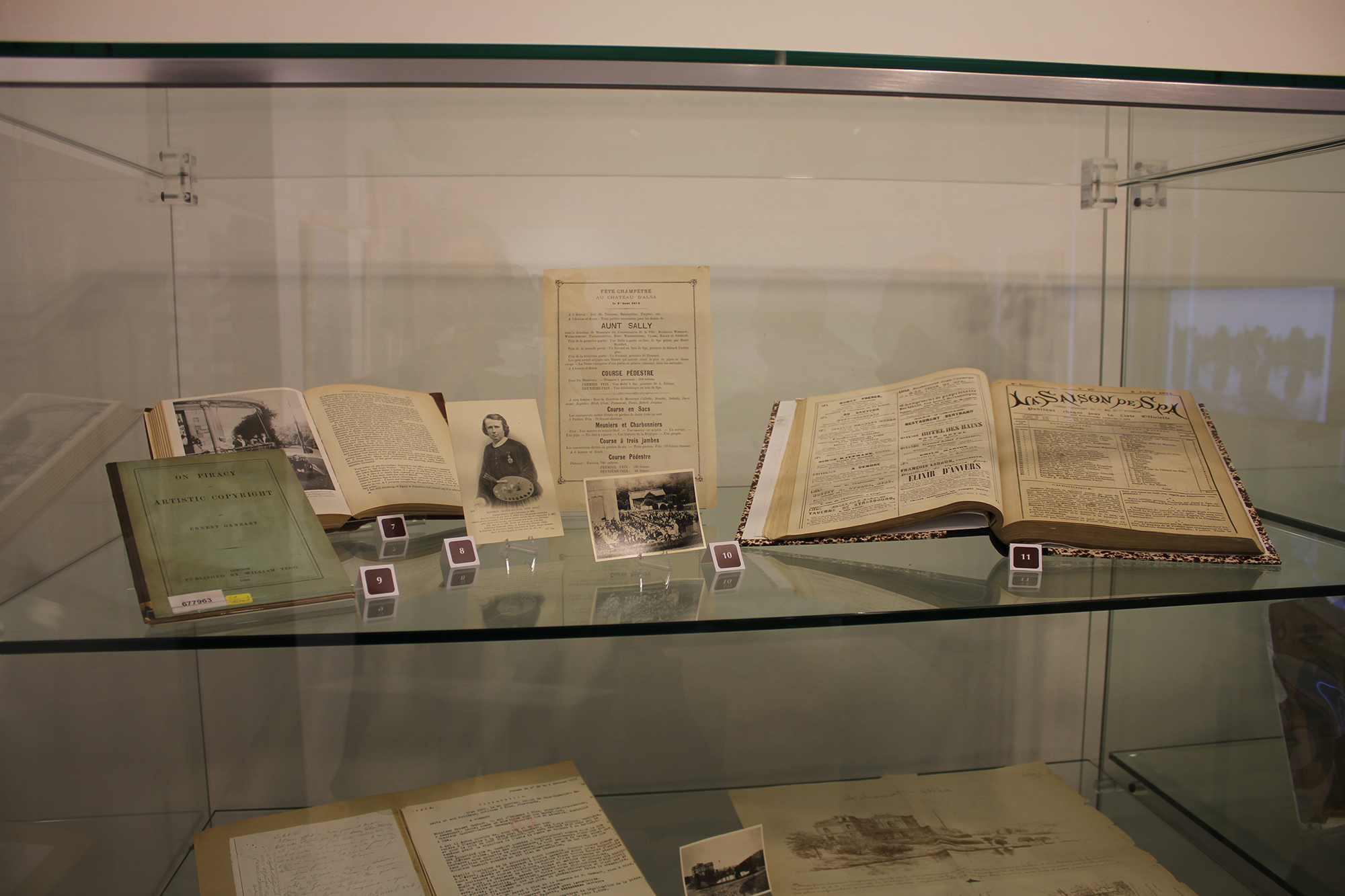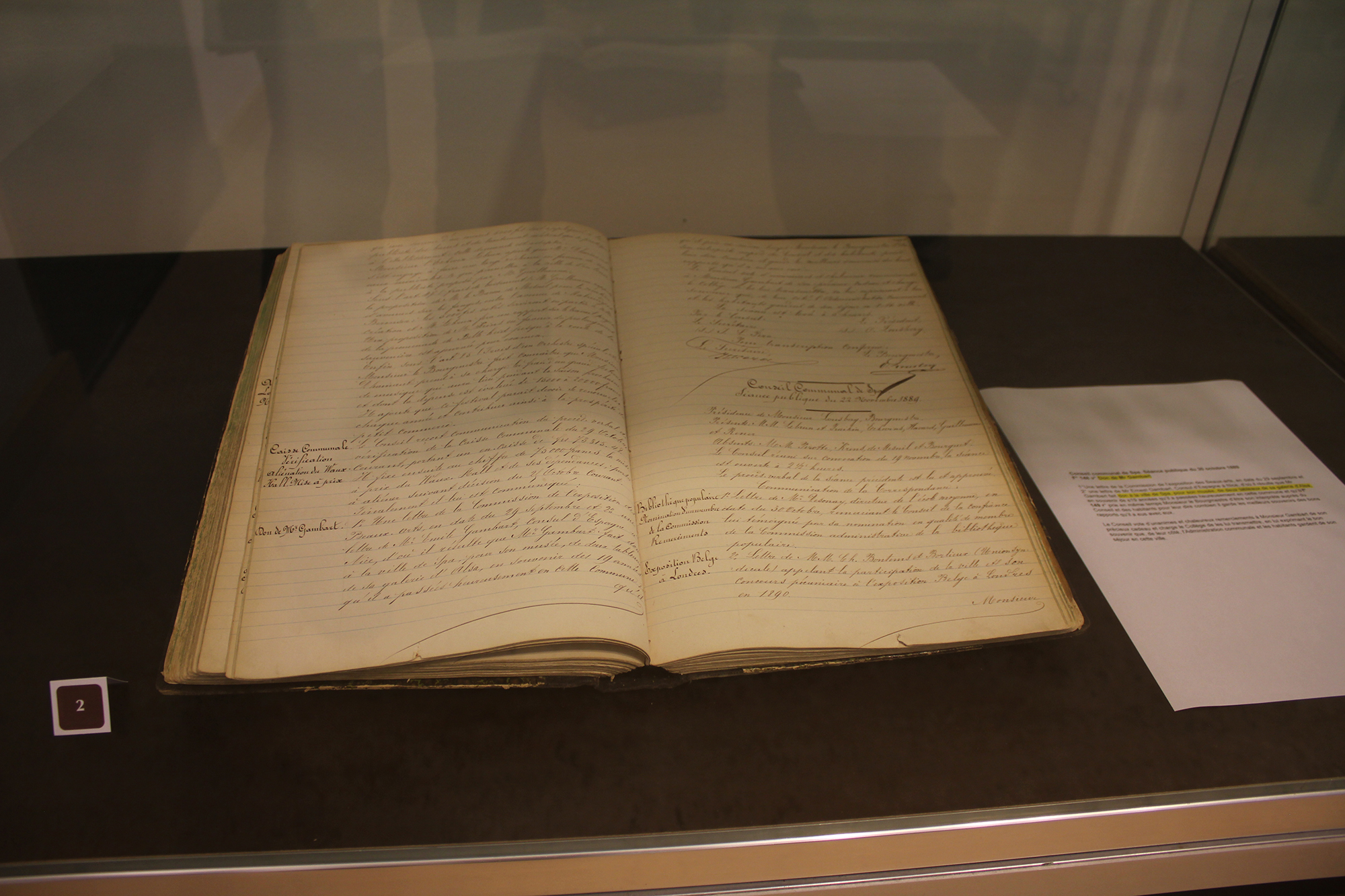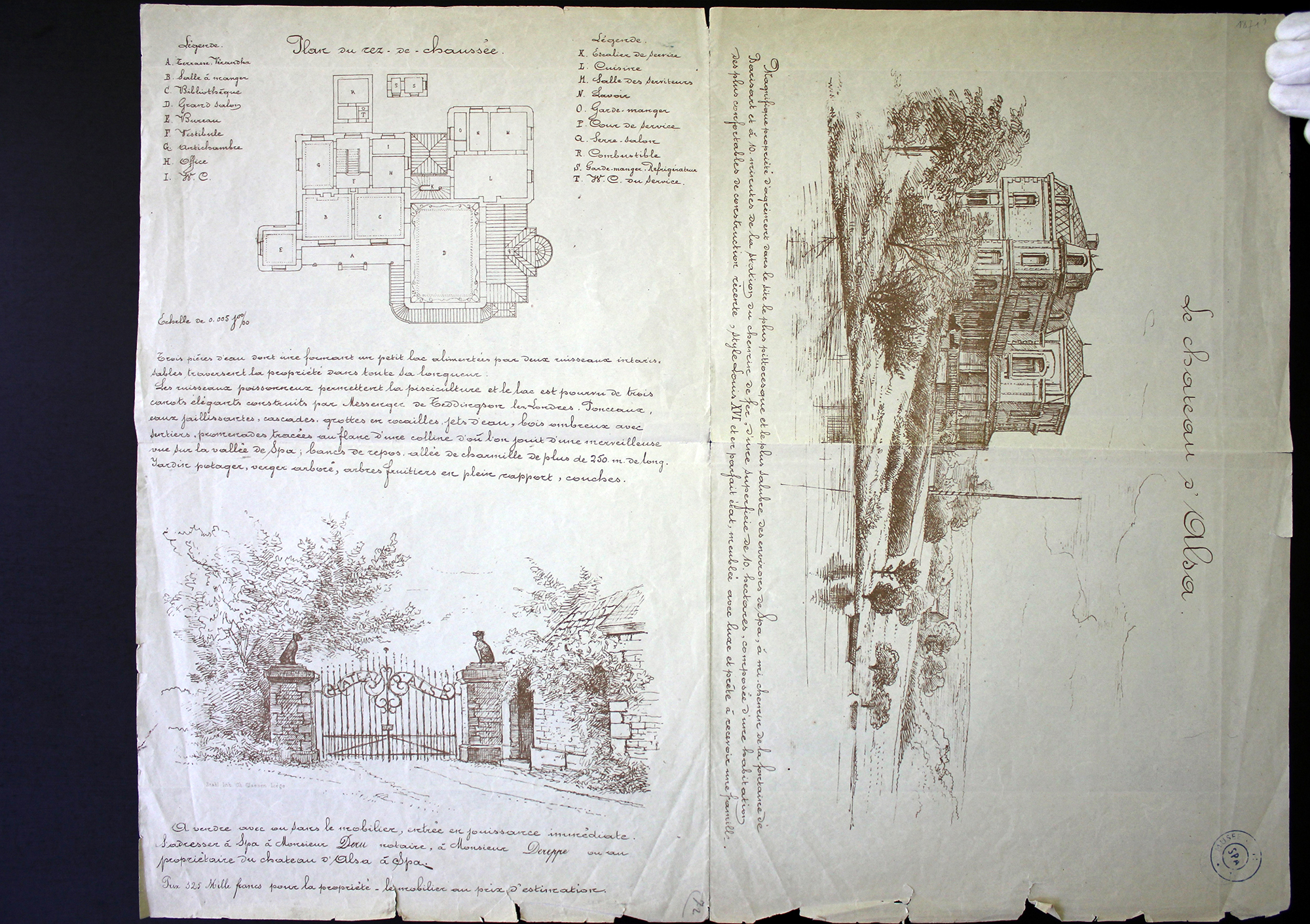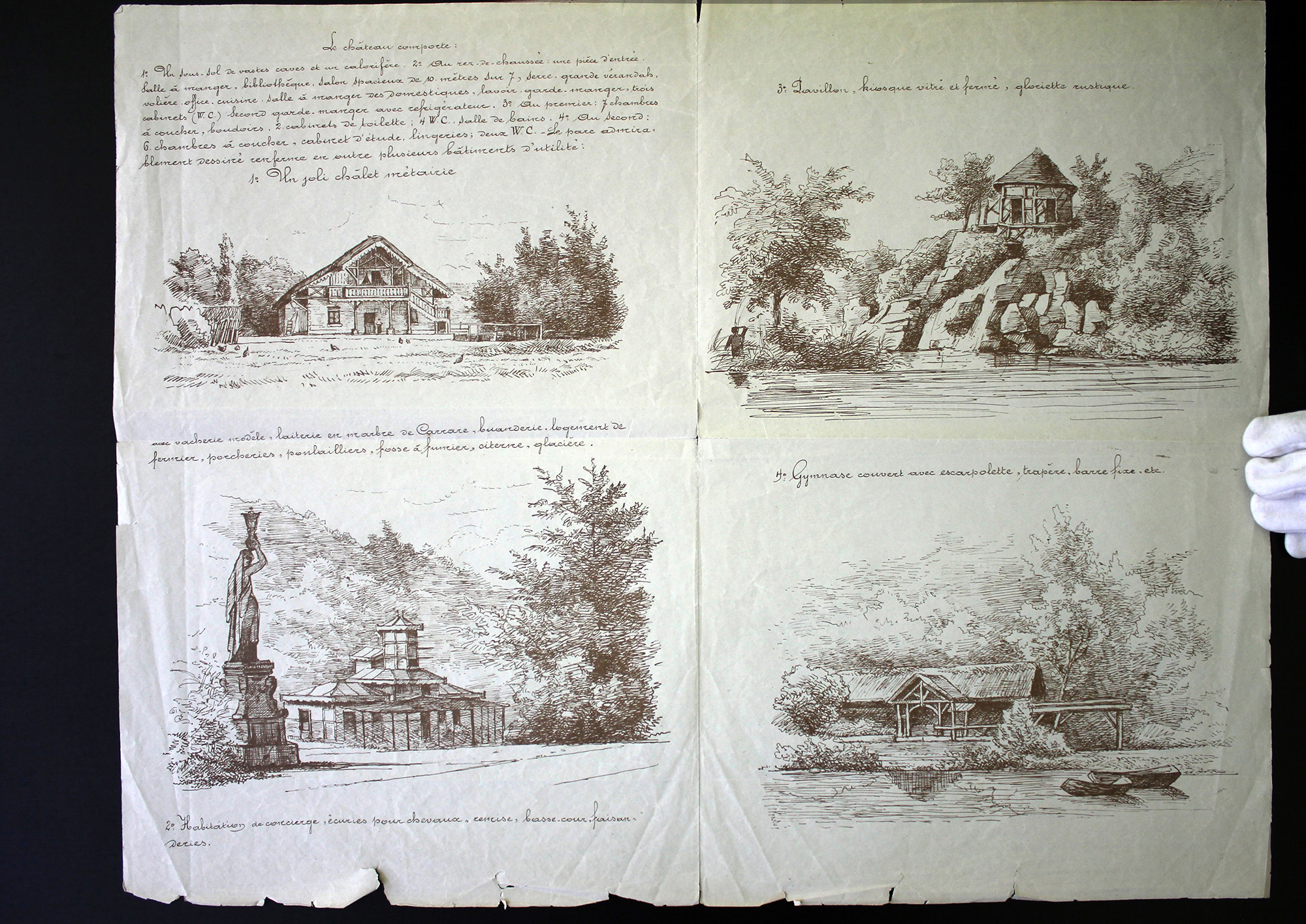Cabinet de lecture
Musée de la Ville d’eaux, Spa
28/08 – 14/11/2021,
03/04 – 13/11/2022
Part of 7 Walks (resolution), a research project by Vermeir & Heiremans
Vitrine #01: Ernest Gambart
One of the most illustrious 19th century residents of the city of Spa was the art dealer Ernest Gambart. Before settling in Spa, Gambart’s London business unquestionably pioneered the commercial gallery system as is still in use today.
Ernest Gambart, a Belgian dealer in paintings and publisher of prints, settled in London in 1840. In the three decades he would spend in England, Gambart became one of the most inventive entrepreneurs of his time, shaping the London art world along a new valorisation model. He created a new market for living artists. He ingeniously used contracts, copyrights and exhibition rights to monopolise the production and distribution of ‘his’ artists. At his heyday Gambart was the market, he was able to create and shape artists careers, like Rosa Bonheur’s, the French animal painter.
After selling his London business Gambart wished to leave behind his image of a merchant, and bought two high quality residences in Spa and Nice. In both villas he nurtured his image of a generous Maecenas. In the Château d’Alsa in Spa he invited artists to come and take the waters at Spa. His art collection at his villas, furbished as real museums, was considered one of the best of Europe at the time, the perfect excuse to invite kings, queens, diplomats,… to parties in the landscaped gardens of the estates. His villa in Spa quickly gained cultured distinction, and was described in the society press as the “villa soleil des artistes”.
Spa was only attractive for Gambart because of its colony of wealthy summer visitors, the beautiful villas with their lavish gardens and the unique attractions that Spa had to offer such as gambling, concerts and the healing waters. The spa baths were opened in 1868. On top of that Marie-Henriette, the wife of King Leopold II, also decided to live in Spa. Gambart had generously decorated her apartments with paintings on all her previous visits to Spa.
After 1899 Gambart donated Château d’Alsa to a former mistress. On the occasion of his formally moving to Nice he donated two paintings to the city of Spa, one of which is a landscape by Euphrosine Beernaert. After his death in 1902 the estate was cut up in different properties.
video
Ernest Gambart: Monopolising the Artist
Vermeir & Heiremans and Luke Mason
duration 25′ – English spoken (headphones), French subtitles
The video elaborates on Gambart’s creation of a market for living artists, his inventive use of artists contracts, copyrights and exhibition rights, and his new lifestyle as a Maecenas in Spa and Nice.
wall
1_Euphrosine Beernaert, Landscape
oil on canvas / 38 x 59 cm / no date
gift of Ernest Gambart / collection of the Musée de la Ville d’eaux
vitrine
2_Register of the Commune of Spa – 1889
On 30 October 1889 the minutes of a city hall meeting mention a gift of Ernest Gambart, which the members of the council gracefully accept. The gift consists of two paintings: Zingarella (1877) an oil painting by Tytgadt and a landscape by Euphrosine Beernaert, which is on display.
3_Notary Act of the (fictive) sale to his mistress Marie Tilloy – typed translation
4_Notary Act of the (fictive) sale to his mistress Marie Tilloy – copy of the original
Gambart ‘sold’ the Chateau d’Alsa estate to his former mistress, Marie Tilloy. It is very likely that the sales was hidden donation, as the act mentions that payment was made before signing the act.
5_Two photo’s of the estate Chateau d’Alsa
6_Sales prospectus of the Chateau d’Alsa, published on the occasion of its sale to Union de Crédit.
After Gambart’s death the Chateaux d’Alsa estate in Spa is portioned up and sold in lots by the Union du Credit bank after Gambart’s former mistress was forced to sell the entire estate. This happened after she had overextended herself by taking out mortgages on the buildings and the furniture, ironically to buy more land and build more villas, one of which is villa New-Castle.
7_Jeremy Maas: Gambart: Prince of the Victorian Art World (London: Barrie & Jenkins, 1975)
Photo of Ernest Gambart with family and friends at the Chateau d’Alsa in 1886. Photo by Albéric du Chastel de la Howarderie (1842-1919).
Thousands of his negatives on glass are kept in the Musée de la Ville d’eaux and have been digitised..
8_Marie-Rosalie, dite Rosa Bonheur: carte postale
Gambart invited the French animal painter Rosa Bonheur several times to Spa. Her name figures on the Monument de Cascade as a famous visitor of Spa. Gambart introduced her to Queen Victoria who bought several of her paintings. Bonheur received honors from the court of Napoleon III. Bonheur was influenced by her fathers’ adherence to the Saint-Simonian philosophy, which supported a vision of universal harmony that included total gender equality. In its social-utopists views, artists, thinkers and industrialists would play an important role in governing and working at the service of society. They criticised private property in land (rent) as well as capital (interest), both being the basis of exploitation of the worker.
9_Ernest Gambart: On Piracy of Artistic Copyright (London: William Tegg, 1863)
Courtesy Erfgoedbibliotheek Hendrik Conscience, Antwerpen
Once a painting was finished, a selection of them was sent to engravers to create etchings to which people could subscribe. Copyrights were often more profitable than selling a painting outright. The international distribution of etchings not only increased the value of the paintings, in the 19th century art trade copyrights represented a substantial source of income for all agents involved. Through this global trade, which also convinced the masses not only to look at art, but to buy etchings. The rise of photography fundamentally disrupted the market for engravings. Gambart wrote a short pamphlet on the issue, “On Piracy of Artistic Copyright”.
A copied version of the booklet is available.
10_Fete Champêtre au Chateau d’Alsa: photo and folder
11_Saison de Spa_2 July 1874
The high season in Spa ran from April to October, during which period visitors could enjoy an elaborate programme of cultural activities and other entertainment. Programmes were announced in local and society press, such as Saison de Spa, a weekly that also published list of foreign visitors to Spa who had to register upon arrival. It equally announced famous visitors soon to arrive. On 2 July 1874, artists to be hosted by Gambart in his “villa soleil des artistes” are announced.
